EMB 145 Fuel Savings
Saving fuel when oil prices are high is of great importance. The first consideration is often on-time performance; however, climbing out on profile and planning idle descents will not increase flight time and may even improve it. In addition, Long Range Cruise will typically add only 2-5 minutes to the ETA while saving hundreds of pounds of fuel. Below are all the aspects and phases off light in which proper planning can save fuel in the EMB-145 family of aircraft. Using all of them can typically result in a fuel savings of about 10%.
Fuel Load Planning
Taking extra fuel in the EMB-145 does little to increase the fuel burn. Unlike many other airplanes, the EMB-145 can climb to 37,000 feet, its maximum operating altitude, without having to level at a lower altitude until its weight allows a higher altitude. Increasing the fuel load by 1000 pounds will increase the burn typically 50 pounds or less.
Cruise Altitude Planning
A full performance FMS, such as the Honeywell unit, can be a very useful tool for cruise altitude planning. I recommend initializing the FMS at the prior to flight with estimated loads. Any changes to the loads will be immediately recalculated, so there is no harm in initializing it before receiving the final numbers. In addition, the proper flight plan with the published and typical crossing restrictions should be loaded. With this information, the Honeywell FMS with full performance will give you fairly accurate fuel burn estimations. You can check this information against your numbers provided by the computer or dispatcher. In addition, you can then use the Performance Init What-If function to locate a better cruise altitude or airspeed. This will be discussed in-depth later.
Single Engine Taxi
For taxi times of less than 30 minutes, the use of a single engine taxi will only save a small amount of fuel. Since each engine burns 400 pounds per hour at idle, at best 200 pounds of fuel could be saved with a single engine taxi lasting 30 minutes.If the APU is running during this time, that amount will be lowered to 150 pounds. In addition to this,additional thrust is needed with one engine to taxi, further negating the savings. For taxi times of less than 30 minutes, the use of a single engine taxi is somewhat negligible. For taxi times longer than 30 minutes, a single engine taxi with the APU shut down may be considered. 20-30 pounds of fuel will be required for a crossbleed start, and slightly less for an APU start.
Taxi at Idle
The EMB-145 puts out a fair amount of thrust. On concrete,simply releasing the brakes will allow the aircraft to begin rolling and accelerate to a reasonable taxi speed. On asphalt, additional thrust is often required to begin taxi, but once the aircraft does begin to roll, idle thrust should be adequate for taxi. Unless required by ATC in situations like crossing an active runway (expedite), power settings above idle should be avoided.Any additional thrust is wasted fuel out the tailpipe, which will require more braking and will result in hotter brakes for take-off. Use of this procedure will easily save over 100 pounds of fuel for a typical 30-45 minute taxi at a major airport. And if there is a line for take-off, there is simply no reason for rushing up to it.An anxious pilot and a patient pilot will take off at the same time, but the patient pilot will have more fuel and cooler brakes.
Initial Climb
Leaving acceleration altitude, consideration for determining airspeed should first be given to airspace and ATC requirements, such as 200 KIAS below 2500' AGL in class C and D airspace (CFR 91.117.b), or 250 KIAS in ATL for the RNAV departures. The next consideration should be the direction of flight. If the aircraft is heading in the direction of the departure corridor, the aircraft should be accelerated to 240 knots. If the aircraft is heading opposite of the departure corridor, a climb speed of 200 knots should be maintained. A high speed climb opposite of the route of flight wastes both time and fuel.
Cruise Climb (out of 10,000)
The key to saving fuel during this segment of the flight is climbing on a correct profile into the twenties. The normal climb schedule for the EMB-145 above 10,000' is 270 knots and then transitioning to.57 Mach. Generally speaking, this is the optimal climb and will save about 200 pounds of fuel. Unless ATC requires otherwise, adherence to this will provide the best fuel economy.There are a couple of exceptions to this rule. When climbing into a strong and increasing headwind condition such as the jet stream or an otherwise strong prevailing west wind, it is better to climb out at a higher speed. In this case, climbing out on the alternate 290/.65 profile will save several hundred pounds of fuel in addition to being a few minutes quicker. From the mid twenties on up, climbing at .65 Mach will save a marginal amount of fuel versus the .57 Mach climb profile. In addition, if the temperatures in the thirties are below standard, the higher airspeeds may be required to keep the total air temperature (TAT) above '45 degrees Celsius, sothe .57 Mach climb speed should be avoided above FL250. A pitch of 4 degrees nose up is an elegant solution for flying a proper climb profile.It will maintain about 270 KIAS into the upper teens, then transition to.57 Mach and maintain that until the low twenties, then accelerating to .65Mach in the upper twenties and increasing to .68 Mach in the lower thirties. With only small adjustments,this is a stable, fuel efficient, and mostly effortless setting that can be maintained up to FL370.
Cruise
As a general rule of thumb, cruising faster in a headwind and slower in a tailwind will save fuel in jet aircraft. This also holds true for the EMB-145. Reference the Long Range Cruise speeds for the altitude, temperature, and weight in the performance manual. The number given will be a good speed for a tailwind or calm wind condition, and for a headwind, some speed should be added. For altitudes above 30,000' and in strong headwind conditions, a LRC speed may be less fuel-efficient than a normal cruise speed. Referencing the Performance Init What-If function of the Honeywell FMS will provide a LRC speed that considers winds. It will also compare it against the normal high-speed cruise concerning time and fuel required. You can also compare different cruise altitudes with this function.(The Performance Init What-If is an outstanding function and is useful for practically every flight) Slowing even somewhat from a high-speed cruise will save a notable amount of fuel, and 270/.72 is a great compromise for time and economy. For best fuel economy, slow further to Long Range Cruise, which basically is 250 KIAS for every altitude, and add 10-15 knots for every 50 knots of headwind component, as a general rule of thumb. Any changes to the planned cruise speed must be conferred to ATC (AIM 4-4-11.c).
High Altitude Descent
Fuel economy is best at higher altitudes. Higher altitudes should be maintained as long as possible to avoid the higher fuel burns at lower altitudes. If ATC gives a descent instruction, the descent should be made as slow as possible. ATC expects jet aircraft to climb or descend at the rate of at least 1000 feet per minute; therefore this figure should be used during a normal descent clearance.In addition, the crew can request a 'Pilot's Discretion' to descend and maintain altitude as long as possible.
Descent Planning with a Crossing Restriction
Maintaining altitude as long as possible is key to good fuel economy. The EMB-145 will descend out of altitude with idle thrust at a rate of about 3000 feet per minute. This works out to about a 4.0 degree glide path in a no wind condition, slightly more in a headwind condition, and slightly less in a tailwind condition.Once given the clearance to cross, the altitude and desired angle should be entered into the FMS. (And if you are uneasy about a steep angle, you may want to consider placing a point five miles prior to the crossing restriction, making this your new crossing restriction,and thus providing a five mile buffer.)Soon after entering this information into the FMS, a TOD carat will appear on the flight plan course. This is your Top Of Descent; the point the selected angle intersects with your current altitude. On the Honeywell FMS,six miles prior to this point, the FMS glide path will appear automatically. Start a descent at this point of about 1000 FPM down (and report vacating the altitude per AIM 5-3-3.1.a). Shortly thereafter, the glide path with come alive, and you can select 3000 FPM down and retard the throttles to idle. Staying at or below this glide path will guarantee the crossing restriction. If a speed restriction of 250 knots at the crossing point is also given, you should be level 5 miles prior to the crossing in order to slow. In addition to flight idle descents being more fuel efficient, they are also quicker.At max speed, the true airspeed of the EMB-145 at 25,000' is about 460 knots, and at 10,000 is about 380 knots.Starting a descent early not only increases fuel burn, but also slows the airplane, and can add several minutes to ETA. A patient pilot who properly plans can arrive several minutes sooner and with several hundred pounds more fuel.
Minimum Clean Speed
The EMB-145 can fly at very low airspeeds without any flaps extended; typically this number is between 150-170 knots, depending on the weight. This is, however, not always the most fuel-efficient speed, as it can be behind the power curve. I have found that a pitch of 4 degrees nose up is a good indication of the aircraft's minimum clean speed (the speed for this pitch will be between 180-200 knots depending on the weight). For slower speeds that require more than 4 degrees pitch up, Flaps 9 should be selected.For airspeeds higher than this, Flaps 9 will result in excess drag and fuel burn.
Approach Configuration
For best fuel economy, the aircraft should be glided at idle thrust to the marker in a clean or Flaps 9 configuration. Unless required for ATC, icing conditions, or maintaining your company profile, carrying power with the flaps and gear extended will needlessly increase your fuel burn.
Side Note
The power output versus the fuel consumption in a piston engine is relatively linear. In turbojet engines, the relationship is exponential. A turbojet engine is far more efficient at high power settings than at low power settings. "Cracking the throttle" in a turbojet engine will greatly increase the fuel flow with a negligible increase in thrust and thus should be avoided.
Honeywell FMS Performance Init What-If
This function is located on the second page of the Performance menu. The standard initialization must be done before using this function. When selected, the pages will appear as they do in the standard initialization,except all entries will be in a smaller font.Any changes made by the user will be in the normal larger size font. The last page with the weights will ask to initialize the What-If information. Selecting it will not change any of the settings from the standard initialization. This is a parallel program, and it will compare the results of the What-If with the results of the standard inputs done in the regular initialization. The first page of the What-If performance data will compare the ETA and the fuel required or remaining. The second page will list the speed for Long Range Cruise, which again does consider wind in addition to weight, altitude,and temperature. The Performance Init What-If can safely be used anytime after the regular initialization has been done.
By David Williams, former EMB-145 captain and currently furloughed major airline pilot.
-
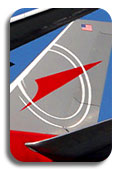
Delta Air Lines 04/23/2024
-
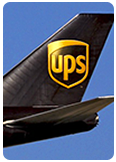
United Parcel Service 04/23/2024
-
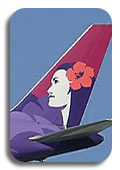
Hawaiian Airlines 04/22/2024
-
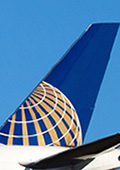
United Airlines 04/22/2024
-
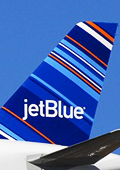
JetBlue Airways 04/19/2024
 AIRLINE PILOT CENTRAL
AIRLINE PILOT CENTRAL